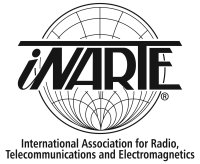Electrical Solutions That Optimize Business Operations
Power and Electrical Solutions that Optimize Business Operations
When business operations are interrupted by failure or temporary stoppage of electrical equipment, power disturbances are usually the root cause of these problems. Power disturbance issues have existed since the first electrical device was developed. Power disturbances occur when the designed characteristics of electrical voltage to a device change unexpectedly. Power disturbances can cause an electrical device to fail. When the device usually fails, it is because the electrical conditions have stressed it beyond its maximum ratings.
A power disturbance can be any of the following:
- Lightning Strike
- Power Surge
- Power Quality Phenomena
- Total or Partial Power Failure
- Voltage Fluctuation
- Waveform Fluctuation
- Equipment Failure
When a facility’s infrastructure is not properly designed to manage and protect the electrical equipment within the facility against power disturbances, then the results will be some type of failure on electrical equipment or their circuits. Either can cause partial or total electrical systems failure, individual electrical equipment failure and network crashes. After a partial or total outage of electrical systems and equipment occur, some type of business stoppage results while the equipment is replaced, repaired, or restarted. Computers at times will lockup, and corruption or loss of valuable data from servers, workstations, and PLC’s can occur.
Every Year 72 Percent of all US Businesses are Interrupted from Power Disturbances
On average, each US business will experience 3.9 power disturbances per year, here are some more facts about power disturbances:
- 45.3 percent of all computing and network equipment or data loss failures reported are attributed directly to power disturbances
- 33.7 percent of US companies have had business operations interrupted because of lightning storms
- 33 percent of all server failures are from power disturbances
- 49 percent of power disturbances last less than 3 minutes
- 20 percent of power disturbances last 1 hour or more
When businesses were questioned about electrical outages, businesses stated the following:
- 19 percent of businesses stated they had no outages
- 18 percent of businesses stated that they had 1 outage
- 24 percent of businesses stated that they had 2 outages
- 12 percent of businesses stated that they had 3 outages
- 8 percent of businesses stated that they had 4 outages
- 8 percent of businesses stated that they had 4+ outages
- 11 percent of businesses stated that they had 7+ outages
Some examples of power disturbance events and effects are the following:
- Earth Potential Rise (EPR)
- Electrical Line Noise
- Electromagnetic Compatibility (EMC)
- Electromagnetic Interference (EMI)
- Radio Frequency Interference (RFI)
- Equipment Failures
- Ground Potential Rise (GPR)
- Harmonic Distortion
- Over Voltage
- Partial Power Failure
- Power Factor Below 1
- Power Failure
- Power Outages
- Power Quality Phenomena
- Power Sags
- Power Surges
- Service Entrance
- Service Utilization
- Lighting Voltage Ranges
- Switching Transients
- Time-Dependent Dielectric Breakdown (TDDB)
- Under Voltage
All of these power disturbance events can cause damage or total failure of equipment, hardware, software, and data loss or corruption.
The Problems with the RRR Method
The typical normal restoration process when an outage or equipment failure occurs is called the RRR method. It involves, restoring the power to the device (R), repairing the device (R), and the possible replacement of the device (R). The main goal of this method is to get the equipment online as soon as possible. This method is a cycle that cannot be stopped unless the proper equipment protection measures are implemented.
The More Efficient PRRR Method
The cycle can only be broken by first preventing, reducing, or eliminating the effect that the power disturbance has on business operations. This requires proper analysis, design, and implementing protection methods to control power disturbance events before outages and equipment failure takes place. This approach is called the PRRR approach. It involves prevention (P) of restoring the power to the device (R), repairing the device (R), and replacing the device (R). If outages or equipment failure still takes place after preventative measures are implemented then documentation, investigation, and analysis for what protective measures failed needs to be completed. Once the problem is located, corrective measures need to be taken to prevent the failure from reoccurring.
The PRRR approach is a holistic facility protection approach that includes using:
- Codes and Standards Compliance
- Facility Power System Evaluation (Ac and Dc)
- Service Interruption Analysis
- Monitoring of Power Entering the Facility
- Calculation of Yearly Planned Schedules Outages
- Calculation of Service Redundancy Costs
- Calculation of Probable Component Failure Rate
- Calculation of Protection Device Failure Rate
- Calculation of Service Outage Cost (Minute and Hour)
- Establish the Existence of a One-Line Electrical Drawing for the Facility
- Establish third party commissioning
- Short Circuit Analysis and Arc Flash Analysis
- Thermal Imaging Inspection
- Determine Type and Power Quality Required for all Areas
- Power Evaluation
- Grounding Evaluation for Internal and External Devices
- Lightning Protection Evaluation
- Surge Protection Devices (SPD)
- Evaluate all Cable Systems Entering the Facility
- Evaluate all Dc Storage Batteries
- Evaluate all Backup or Emergency Power Systems
Utilizing the holistic PRRR approach assures that performance goals can be met for equipment installation, performance, and reliability. By incorporating the holistic PRRR approach at facilities, ongoing electrical equipment failures and costly downtime losses from power disturbances can be reduced and possibly eliminated altogether. Once actual downtime costs are calculated and known, it clearly can be seen that prevention of outages and equipment failures actually saves businesses money and continues to pay back dividends year after year.
Some examples of power disturbance protective devices are the following:
- Surge Protective Devices (SPD’s)
- Voltage Regulators and Power Conditioners
- Uninterruptible Power Supplies (UPS)
- Standby (Offline)
- Line Interactive
- Double Conversion (Online)
- Generators
- Isolation Transformers
- Motor Generators
- Motor Controls for Starters
Examples of power disturbance protective devices continued:
- Voltage and Current Protection for Motors
- Constant Voltage Transformers
- Harmonic Filters
- Capacitor Banks
To properly manage the PRRR approach businesses should have either a power quality expert on staff or a consultant who is a subject matter expert (SME) on power quality.
Case studies have proven that equipment failures from power disturbances are drastically reduced or eliminated after these designs, standards, and practices are implemented. In many cases, customers were losing over $100,000 in equipment replacement every year from lightning damage alone. Typical customer equipment failures were reduced on average of 92 percent, in some other cases over ten years have passed without another equipment outage. These case studies have also shown that when the holistic approach is used on a facility, the return on investment is usually less than two years.
In conclusion, the root cause of electrical equipment failures is from power disturbances. Power disturbances occur to every business whether they go noticed or not and can be very costly. By utilizing a holistic approach businesses can be prepared, and protected against power disturbances saving businesses money from preventing equipment downtime and increasing profits year after year.





